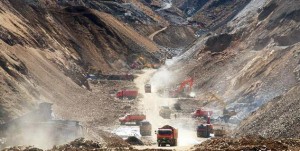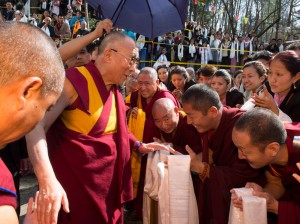Chinese media censorship is hardly a new, or a surprising aspect of the hard-line domestic policies of the Chinese Communist Party. For years, the government has, mainly through the Central Propaganda Department (CPD), controlled what stories the various state-owned news agencies could report to the public. However, growing discontent with the current situation has enabled many Chinese journalists to oppose the government’s censorship. One way to do this has been to secretly leak the countless ‘censorship instructions’, or directives, that the CPD issues to the Chinese media on current issues.
One such CPD directive, regarding the tragic mine landslide in Tibet’s Maizhokunggar County on March 29, was leaked by anonymous Chinese reporters at the beginning of April. The directive, originally in Chinese, but translated and posted by the independent media organisation China Digital Times (CDT) read:
‘the natural massif landslide which occurred at the China Gold Group’s mining area in Lhasa, use Xinhua wire copy and information issued by authorative departments as the standard. Write reliably. Objectively and accurately report on the disaster. Cover disaster relief promptly and abundantly. Properly guide public opinion. Without exception, do not report or speculate on related sensitive issues. Do not send journalists to the scene to investigate or report [live]’.
The leaked directive clearly shows the high level of censorship imposed by the CPD to the Chinese media. For instance the media are instructed to use only information issued by the official state news agency Xinhua and ‘authoritative departments’. Journalists are prohibited from obtaining ‘objective’ information first hand by visiting and investigating. In addition, the directive instructs media to ‘cover disaster relief promptly and abundantly’ thus focusing attention on the relief effort conducted by the Chinese authorities.
The prohibition on reporting on ‘related sensitive issues’ refers to linked issues that would otherwise taint the Chinese Government, for example local complaints over mining damage to the environment and Chinese procurement of Tibetan natural resources, as well as the possibility that the landslide could be a result of aggressive Chinese mining in the Gyama valley (as suggested by the Tibetan Government-in-Exile after the accident).
The China Digital Times , the organisation responsible for publishing the directive, is an independent media organisation that brings uncensored news from China to the outside world, while shedding light on the oppressive censorship conducted by the Chinese authorities by collecting ‘content that has been marginalised or censored in Chinese cyberspace’. One way of doing this is by obtaining the directives issued by the Central Propaganda Department, translating them to English, and posting them online. According to the CDT’s own website, these directives are often leaked by Chinese journalists and bloggers. The CDT then compares these directives against official Chinese media reports to confirm their implementation in the Chinese media sphere. However, because some of the directives are given orally by the Central Propaganda Department to editors and journalist, the wording published by the CDT online may not be exact.
Within journalistic circles, the directives issued by the Central Propaganda Department are often referred to as ‘Directives from the Ministry of Truth’ – a reference to the propaganda ministry in George Orwell’s apocalyptic novel 1984, where the ministry is actually serving the opposite of the truth.





 Print
Print Email
Email